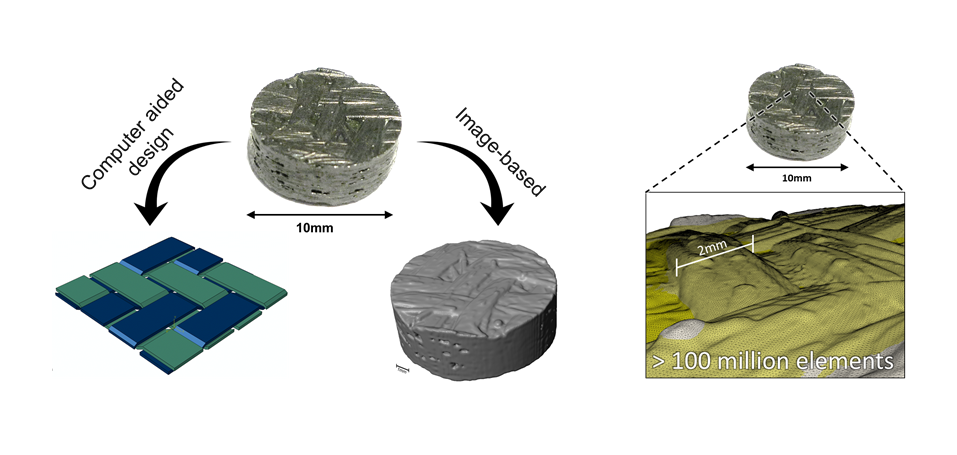What is meant by IBSim?
Image-Based Simulation (IBSim) or modelling can have differing meanings depending on the context. In our cross-sector community, IBSim is used to mean “engineering simulations based on 3D geometry captured by some form of imaging technique”.
The simulation techniques often used are Finite Element Analysis (FEA) or Computational Fluid Dynamics (CFD), but it can be any geometrically based numerical method. That is, to use ultra-high resolution non-idealised model geometries for simulations that estimate the performance of components ‘as manufactured’ rather than ‘as designed’ for improved accuracy.
In this context, IBSim does not mean 1D modelling (or systems modelling) based on measurements obtained by imaging as input parameters e.g., video monitoring the flow of raw material stock to estimate product yield during processing.
IBSim is considered an aspect of ‘digital twin’ technology being developed for the smart manufacturing methods of Industry 4.0.
Benefits of IBSim
- ‘Real’ components can be simulated with microscale accuracy with no need for geometry to be idealised.
- Complex architectures such as fibre composites and foam structures are easily digitised.
- The method inherently accounts for the impact of the features introduced during fabrication (e.g. deviations from tolerance, micro-cracks, and pores) on the performance of components.
- For model validation, actual test samples can be replicated digitally for a direct comparison of physical and virtual test results leading to an improved level of confidence.
- The same manufactured component can be subjected to multiple virtual destructive tests for qualification as a non-destructive evaluation method.
